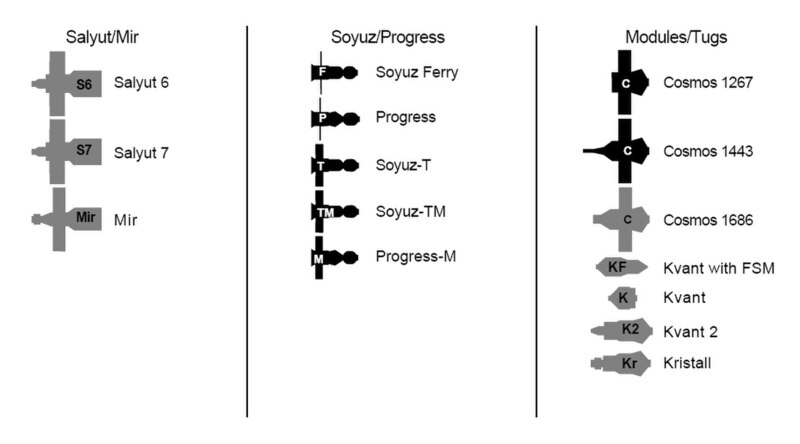
Figure 2-10. Key to icons. Salyut 6 and Salyut 7 each had two docking ports; the Mir base block has two docking ports and four berthing ports. Multiple docking ports mean continual configuration changes as spacecraft come and go and modules are added. The icons shown here are combined in sections 2.7.3, 2.8.3, and 2.9.3 to depict the changing configurations of the three multimodular stations throughout their careers (1977-1994). The icons and icon combinations are strictly representative, and do not depict the true orientation of solar arrays or true relative sizes.
|
2.7.3 Salyut 6 Career
Changes in the configuration of the Salyut 6 station included dockings by Soyuz Ferry, Soyuz-T, Progress, and the Cosmos 1267 FGB, as well as Soyuz transfers from port to port. The icons on the following pages depict these changes. Aligned horizontally with each icon are names (arranged to match icon positions) of spacecraft and station modules depicted and the inclusive dates of the configuration. Port transfers are shown by flipping the Salyut icon and leaving the Soyuz icon in place because it was Salyut 6 that rotated during port transfers. The text blocks below the icons cover important hardware-related events, such as anomalies and EVAs. Refer to figure 2-10 for key to icons. For more information on Soyuz Ferry, Soyuz-T, and Progress vehicles mentioned, see sections 1.8.4.5, 1.12.3.2
, and 1.10.4.2 . For Cosmos 1267 FGB information, see section 3.3.4.

|
|

|
Salyut 6
|
September 29-October 10, 1977
|

|
|

|
Soyuz 25 • Salyut 6
|
October 10, 1977
|
| Unsuccessful Soyuz 25 docking. Soyuz 25 achieved soft dock with the new Salyut 6 station, inserting its probe apparatus into the conical drogue of the Salyut 6 front port. Hard docking involved retracting the probe to pull the station and spacecraft docking collars together. However, the docking collars would not latch. Cosmonauts Vladimir Kovalyonok and Valeri Ryumin had to
|
![]()



